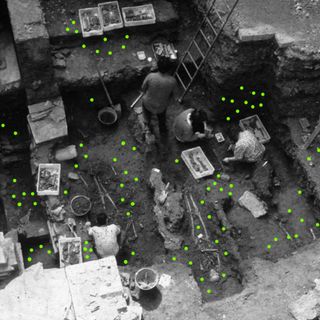Each layer of rock at the Grand Canyon is believed to represent a distinctive period of the Earth’s history. However, about a billion years’ worth of rocks are missing — 25% of the Earth’s geological history.
This loss is attributed to the “Great Unconformity” — or gap in the geological records between 100 million and 1 billion years in different parts of the world, including the Grand Canyon — that is described as “one of geology’s deepest mysteries.” It was first identified in 1869.
Scientists have had several theories over time to explain the “gap of missing time.” One of the popular ones suggests that the Earth underwent a glaciation event known as “Snowball Earth” about a billion years ago, which covered several areas with ice. And when the glaciers eventually melted, they eroded sediments from the underlying rocks.
But a recent study published in Geology has come up with another plausible explanation using thermochronology, or the study of the thermal evolution of a region by measuring the heat stored in rocks at the time of their formation.
It links the Great Unconformity to the supercontinent Rodinia, which was formed about a billion years ago and broke up about 600 to 700 million years back.
Related on The Swaddle:
For the First Time, Scientists Find Evidence of a ‘Boomerang Earthquake’
“At the bottom, you can see very clearly that there are rocks that have been pushed together. Their layers are vertical. Then there’s a cutoff, and above that, you have these beautiful horizontal layers that form the buttes and peaks that you associate with the Grand Canyon,” Barra Peak, who studies geological sciences at the University of Colorado Boulder in the U.S., and led the study, said in a statement. She added that the Grand Canyon is really an “amazing natural lab” since “[here] are just so many things there that aren’t present anywhere else.”
According to Peak and her co-researchers, during the break-up of Rodinia, while the gigantic landmass was being pulled apart, violent tectonic movements rocked the region of the Grand Canyon too. This resulted in the region sustaining damage in the form of earthquakes that led to its rocks and sediments being washed away into the ocean — with a billion years’ worth of rocks disappearing without a trace.
While the link between the break-up of Rodinia and the Great Unconformity has been theorized in the past, the current research backs it up by dating the rocks through thermochronology.
However, geoscientists believe more than one event may have been responsible to inspire a gap of this magnitude. “There are more than a billion years that’s gone… It’s also a billion years during an interesting part of Earth’s history where the planet is transitioning from an older setting to the modern Earth we know today,” Peak said.
Does this explain the effect of the Great Unconformity in other parts of the world too? Researchers aren’t sure yet, but they’re hopeful and conducting more studies to confirm these hopes. “The findings aren’t quite enough to close the mysterious case of the Great Unconformity once and for all, but they’re a good step forward,” Science Alert reported.




